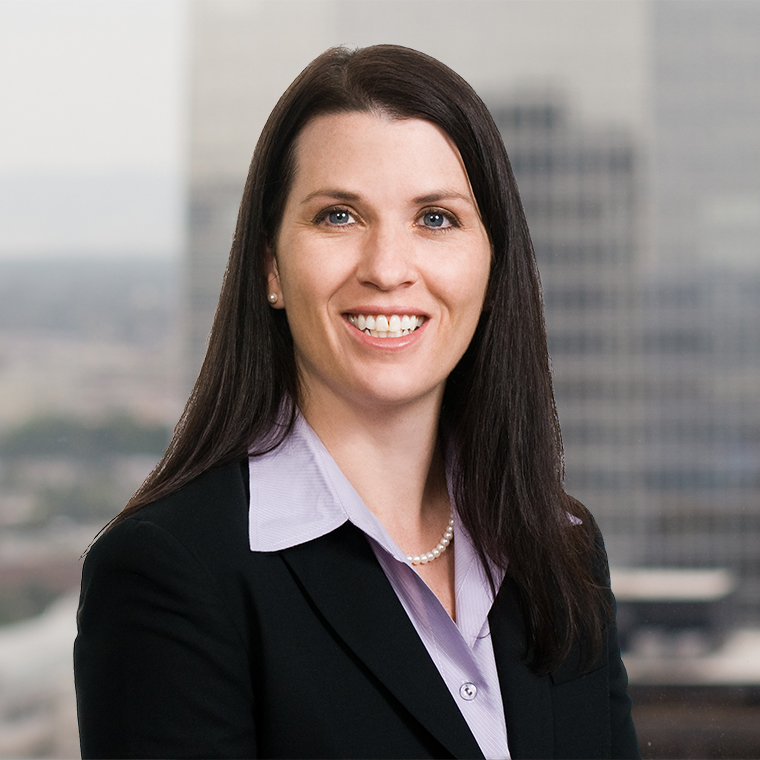Introduction
On April 30, 2020, the Federal Reserve announced actions to expand the Main Street Lending Program authorized under Section 13(3) of the Federal Reserve Act. The expanded program now consists of three credit facilities (up from two) aimed at small and medium-sized businesses (Main Street Loan Facilities), consisting of the Main Street New Loan Facility (New Loan Facility), the Main Street Priority Loan Facility (Priority Loan Facility) and the Main Street Expanded Loan Facility (Expanded Loan Facility). The updates and expansion of the Main Street Loan Facilities are intended to increase borrower and lender eligibility and to provide greater variability in loan amounts available to borrowers.
The New Loan Facility is intended to facilitate the origination of new loans to borrowers, the Priority Loan Facility is intended to facilitate the origination of new loans to higher-leveraged borrowers that may not be eligible for a loan under the New Loan Facility, and the Expanded Loan Facility is intended to facilitate the extension of additional credit to borrowers under an existing term or revolving loan facility (Upsized Facility) in the form of an additional term loan tranche.
The Department of the Treasury, using funds appropriated to the Exchange Stabilization Fund under Section 4027 of the CARES Act, will make a $75 billion equity investment in a single common special purpose vehicle (SPV) in connection with the Main Street Loan Facilities to provide up to $600 billion in loans.
The Main Street Loan Facilities will provide four-year loans to US companies employing up to 15,000 workers or with annual revenues in 2019 of $5 billion or less. Loans issued under the Main Street Loan Facilities (Eligible Loans) are full-recourse and not forgivable. No payments of principal and interest are required for the first year, with the unpaid interest for the first year being capitalized. Generally, the eligibility criteria for Eligible Lenders (as defined below) and Eligible Borrowers (as defined below) are the same for each of the three Main Street Loan Facilities; the term, interest rate, deferral period and no prepayment penalty features are likewise the same under each Main Street Facility. Each such facility will require the Eligible Borrower to attest that, among other things, it will use commercially reasonable efforts to maintain its payroll and retain its employees during the term of the Eligible Loan and to follow the compensation, stock repurchase and capital distribution restrictions that apply to direct loan programs generally under Section 4003(c)(3)(A)(ii) of the CARES Act. Primary differences between the Main Street Loan Facilities are the Eligible Loan types available and how such Eligible Loans interact with an Eligible Borrower’s existing debt.
The following are the principal terms and eligibility criteria for the Main Street Loan Facilities and a brief discussion of key questions that borrowers and investors may have about the proposed programs.
Borrowers Eligible for Main Street Loans
With the recent revisions to the Main Street Loan Facilities, the Federal Reserve expanded the number of employees and revenue requirements to qualify as an Eligible Borrower, but is now requiring Eligible Borrowers to aggregate the number of employees and revenue with certain of their affiliates (using the affiliate analysis required by businesses to participate in the Payroll Protection Program but without the benefit of the waivers to affiliation provided for under the CARES Act). The revisions also include additional requirements such that an Eligible Borrower is any business that meets the following criteria:
- The entity was a “business” established prior to March 13, 2020.
- A business is an entity that is organized for profit as a partnership, a limited liability company, a corporation, an association, a trust, a cooperative, a joint venture with no more than 49% participation by foreign business entities, or a certain tribal business concern (the FAQs provide that other forms of businesses may be considered for inclusion at the discretion of the Federal Reserve).
- The business must be created or organized under the laws of the United States, one of states in the United States, the District of Columbia, any of the territories and possessions of the United States, or an Indian Tribal government.
- A nonprofit entity does not qualify as a business under the Main Street Loan Facilities, but it was noted that the Federal Reserve is evaluating a separate approach to meet nonprofit needs.
- The business is not an Ineligible Business, which is a type of business listed in 13 CFR 120.110(b)-(j) and (m)-(s), as modified by the regulations implementing the Paycheck Protection Program under the CARES Act on or prior to April 24, 2020.
- This generally includes, among other ineligible businesses, financial businesses primarily engaged in the business of lending, certain real estate development businesses deemed to be “passive businesses,” life insurance companies, businesses whose 2019 gaming revenue did not exceed $1 million and comprised less than 50% of the business’s 2019 total revenue, businesses engaged in illegal activity, and “speculative businesses”.1
- The business meets one of the following size criteria: (i) employs 15,000 employees or fewer or (ii) had 2019 annual revenues of $5 billion or less (Business Size Criteria).
- When the business is determining the employee count under the Business Size Criteria, “employees” includes all full-time, part-time, seasonal or otherwise employed persons, excluding volunteers and independent contractors. Businesses must count their own employees and those of their affiliates in accordance with the Small Businesses Administration (SBA) affiliation rules set forth in 13 CFR 121.301(f) (SBA Affiliation Rules).
- When the business is determining 2019 annual revenues under the Business Size Criteria, annual revenues can be determined by either (i) the business’s 2019 “revenue” in its audited financial statements prepared in accordance with GAAP, or (ii) the business’s 2019 annual receipts, as reported to the Internal Revenue Service. As with employee count, a business must include its affiliates under the SBA Affiliation Rules in its 2019 revenue calculations. If audited financial statements or annual receipts for 2019 are not available, the business should use its most recent audited financial statements or annual receipts.
- For venture-backed and private equity-backed companies, the affiliate attribution rules may include as affiliates the venture capital or private equity fund, as well as the other portfolio companies controlled by the fund. Whether a venture capital or private equity-backed company is affiliated with a fund or with a fund’s other portfolio companies will depend on the particular facts and circumstances of the entities involved, including the company’s equity ownership structure; the composition of its board of directors; the contractual, voting and other rights of the investors; and any ownership and control rights (including negative control) the company, its investors or management may have in other companies.
- The business is created or organized under the laws of the United States, with significant operations in and a majority of its employees based in the United States.
- In guidance relating to the Primary Market Corporate Credit Facility (PMCCF) and the Secondary Market Corporate Credit Facility (SMCCF), the Federal Reserve noted that if an eligible entity is not a subsidiary whose sole purpose is to issue debt, the entity, on a consolidated basis (i.e., together with its consolidated subsidiaries), must have significant operations in and a majority of its employees based in the United States. Under this test, in evaluating the eligible entity, the Federal Reserve would not consider any parent company or sister affiliate. If the eligible entity is a subsidiary whose sole purpose is to issue debt, any corporate affiliate of the eligible entity to which 95% or more of the proceeds from the loan are transferred for use in its operations (Primary Corporate Beneficiary) must have significant operations in and a majority of its employees based in the United States on a consolidated basis. If there is no Primary Corporate Beneficiary, corporate affiliates that, in each case, have significant operations in and a majority of their employees based in the United States on a consolidated basis must receive, in the aggregate, 95% or more of the proceeds. We assume this same guidance will apply to the Main Street Loan Facilities.
- This same guidance also provided that a business with greater than 50% of its consolidated assets in, annual consolidated net income generated in, annual consolidated net operating revenues generated in, or annual consolidated operating expenses (excluding interest expense and any other expenses associated with debt service) generated in the United States as reflected in its most recent audited financial statements would constitute having significant operations in the United States. It also clarified that an Eligible Borrower may be a subsidiary of a foreign company, provided that (i) the Eligible Borrower itself is created or organized in the United States or under the laws of the United States, and (ii) the Eligible Borrower, on a consolidated basis, has significant operations in and a majority of its employees based in the United States. An Eligible Borrower that is a subsidiary of a foreign company must use the proceeds derived from participation in the Main Street Loan Facilities only for the benefit of the Eligible Borrower, its consolidated US subsidiaries and other affiliates of the Eligible Borrower that are US businesses, and not for the benefit of its foreign affiliates. Although this guidance was provided in the context of the PMCCF, we assume this same guidance will apply to the Main Street Loan Facilities.
- The Eligible Business must have been in sound financial condition prior to the onset of the COVID-19 pandemic.
- In order to participate in the New Loan Facility or the Priority Loan Facility, any existing loan such Eligible Borrower had outstanding with the Eligible Lender as of December 31, 2019, must have had an internal risk rating that was equivalent to a “pass” in the Federal Financial Institutions Examination Council’s rating system (Pass Rating). In order to participate in the Expanded Loan Facility, the Eligible Borrower’s Upsized Facility must have had a Pass Rating.
- An Eligible Borrower must certify that it has a reasonable basis to believe that as of the date of the origination of an Eligible Loan, and after giving effect to such Eligible Loan, it has the ability to meet its financial obligations for the next 90 days and does not expect to file for bankruptcy during that period.
- The business must be able to make all the other certifications and covenants required by the terms of the Main Street Loan Facilities.
- Finally, in addition to the foregoing requirements, Eligible Lenders may require additional information and documentation when underwriting an Eligible Loan and evaluating a potential borrower’s eligibility and creditworthiness. The Federal Reserve made clear that the requirements in the term sheet and other materials relating to the Main Street Loan Facilities are the minimum requirements for the program, and that Eligible Lenders will need to apply their own underwriting standards in evaluating Eligible Borrowers. The Federal Reserve observed that meeting the minimum standards does not mean a business will be approved or receive the maximum allowable amount.
Eligible Borrowers may participate in both the Paycheck Protection Program and a Main Street Loan Facility. Eligible Borrowers may participate in only one Main Street Loan Facility. Eligible Borrowers that participate in the PMCCF or have received specific support pursuant to the Coronavirus Economic Stabilization Act (§ 4003(b)(1)-(3) of the CARES Act, which provided specific support for air carriers, cargo air carriers and businesses critical to maintaining national security) are ineligible to participate in any Main Street Loan Facility.
Loans Available Under the Main Street Loan Facilities
The loan will have a minimum loan size of $500,000 under the New Loan Facility and the Priority Loan Facility and $10 million under the Expanded Loan Facility, and
- in the case of a loan under the New Loan Facility (New Loan), a maximum loan size that is the lesser of (i) $25 million or (ii) an amount that, when added to the Eligible Borrower’s existing outstanding and undrawn available debt, does not exceed four times the Eligible Borrower’s adjusted 2019 EBITDA;
- in the case of a loan under the Priority Loan Facility (Priority Loan), a maximum loan size that is the lesser of (i) $25 million or (ii) an amount that, when added to the Eligible Borrower’s existing outstanding and undrawn available debt, does not exceed six times the Eligible Borrower’s adjusted 2019 EBITDA; and
- in the case of a new term loan tranche under the Expanded Loan Facility (Upsized Tranche), a maximum loan size that is the lesser of (i) $200 million, (ii) 35% of the Eligible Borrower’s existing outstanding and undrawn but available debt that is pari passu in priority with the Upsized Tranche and equivalent in secured status (i.e., secured or unsecured), or (iii) an amount that, when added to the Eligible Borrower’s existing outstanding and undrawn available debt, does not exceed six times the Eligible Borrower’s adjusted 2019 EBITDA.
In the case of an Upsized Tranche, an eligible Upsized Facility must have been originated on or before April 24, 2020, and must have a remaining maturity of at least 18 months, provided that the Eligible Lender may extend the maturity of the Upsized Facility at the time of upsizing in order to satisfy the 18-month maturity requirement.
The Federal Reserve clarified that
- when determining loan availability for New Loans and Priority Loans, an Eligible Lender must use the same methodology for determining adjusted 2019 EBITDA as it used when extending credit to the Eligible Borrower or similarly situated borrowers on or prior to April 24, 2020; and
- when determining loan availability for an Upsized Tranche, an Eligible Lender must use the same methodology for determining adjusted 2019 EBITDA as it used when originating or amending the Upsized Facility on or before April 24, 2020.
The Federal Reserve also clarified that “existing outstanding and undrawn available debt” means all amounts borrowed under any loan facility, regardless of whether the debt is secured or unsecured, the lender is a bank or a nonbank lender, or the debt was issued as a publicly issued bond or a private placement. Such existing outstanding and undrawn available debt also includes unused commitments under an existing loan facility, but excludes (i) backup lines of credit for commercial paper issuances, (ii) any undrawn commitment that is used to finance receivables (including seasonal financing of inventory), (iii) undrawn commitments that cannot be drawn without additional collateral and (iv) any other undrawn commitment that is no longer available due to a change in circumstances. It is not clear from the foregoing exclusions how amounts in excess of a borrowing base pursuant to an Eligible Borrower’s asset-based revolver would be treated and whether they would be excluded from this calculation, which could have a significant impact on an Eligible Borrower’s maximum loan size. Existing and outstanding and undrawn available debt must be calculated as of the date of the loan application.
Each Eligible Loan will be either an unsecured or secured term loan, with the following features:
- Four-year maturity with amortization of principal and interest deferred for one year and an adjustable rate of LIBOR + 300 basis points that may be prepaid without penalty. The principal amortization schedule for a New Loan Facility will be payable in thirds over three years beginning with the second year. The principal amortization schedule for a Priority Loan Facility and an Expanded Loan Facility will provide for two 15% principal payments for the second and third years, followed by a balloon payment of 70% in the fourth year.
- At the time of origination and during its term, a New Loan may not be contractually subordinate in terms of priority to the Eligible Borrower’s other loans or debt instruments. However, the Federal Reserve noted that this requirement will not prevent the issuance of a New Loan that is unsecured or secured in a second lien position regardless of the term of, or secured or unsecured status of, the Eligible Borrower’s existing indebtedness and will not prevent it from taking on new secured or unsecured debt after receiving the New Loan, provided that the new debt would not have higher contractual priority in bankruptcy to the New Loan.
- At the time of origination and during the term of the Priority Loan or Upsized Tranche, a Priority Loan and an Upsized Tranche must be senior to or pari passu with, in terms of priority and security, the Eligible Borrower’s other loans or debt instruments, other than mortgage debt. An Upsized Tranche must be secured by the same collateral as the Upsized Facility, if the Upsized Facility is secured, on a pro rata basis. In addition, Eligible Lenders can require Eligible Borrowers to pledge additional collateral to secure an Upsized Tranche as a condition of approval. For Eligible Borrowers with multiple credit facilities, this means the Upsized Facility must be the most senior of the debt in an Eligible Borrower’s capital structure. For example, if an Eligible Borrower has an asset-based revolver that is senior to a term loan facility, the Upsized Facility would need to be the asset-based revolver. This may create logistical challenges in adding the Upsized Tranche to the Upsized Facility.
Loan Participations and Payment Priority Under the Main Street Loan Facilities
Under the Main Street Loan Facilities, the Federal Reserve will lend to the SPV on a recourse basis.
Under the New Loan Facility and the Expanded Loan Facility, the SPV will purchase 95% participations in the New Loans and Expanded Loans at par value from participating Eligible Lenders. Eligible Lenders will retain 5% of each New Loan and Upsized Tranche.
Under the Priority Loan Facility, the SPV will purchase 85% participations in the Priority Loans at par value from Eligible Lenders. Eligible Lenders will retain 15% of each Priority Loan. Although the Priority Loans allow Eligible Borrowers to participate in the Main Street Loan Facilities with higher levels of leverage, the pricing of the New Loans and the Priority Loans are the same (LIBOR + 300 basis points). Given this pricing, with the greater risk from the increased leverage as well as the requirement that the Eligible Lender retain 15% of the Priority Loans, Eligible Lenders may not be eager to originate Priority Loans.
For all Main Street Loan Facilities, the Eligible Lender must retain its participation until the Eligible Loan matures or the SPV sells all of its participation. In addition, under the Expanded Loan Facility, the Eligible Lender must also be one of the lenders under the Upsized Facility and must retain its interest in the underlying Upsized Facility until the Expanded Loan matures or the SPV sells all of its participation.
The SPV and each Eligible Lender will share risk in the Eligible Loans on a pari passu basis.
Additional Requirements and Restrictions for Eligible Loans
Eligible Borrowers and Eligible Loans under each Main Street Loan Facility will be subject to the following additional requirements and restrictions:
- Proceeds of the Eligible Loan may not be used to repay or refinance preexisting loans or lines of credit made by the Lender of the Eligible Loan. However, an Eligible Borrower may, solely at the time of origination of a Priority Loan, refinance existing debt owed by the Eligible Borrower to a lender that is not the Eligible Lender. In addition, the Eligible Borrower must commit not to repay the principal balance of, or make payments of interest on, any debt until the Eligible Loan is repaid in full, unless the debt or interest payment is mandatory and due. Neither the Lender nor the Eligible Borrower may cancel or reduce any existing lines of credit outstanding to the Eligible Borrower, except in an event of default. In addition, the Eligible Borrower may not cancel or reduce any of its outstanding lines of credit with any other lender. Notwithstanding these restrictions:
- Eligible Borrowers may repay, including partial repayment, lines of credit in accordance with the normal course of business usage for such line of credit; take on or pay debt obligations in connection with newly acquired inventory financing or equipment financing; and refinance maturing debt; and
- Eligible Lenders may reduce or terminate uncommitted lines of credit; may reduce availability under existing asset-based lines of credit in accordance with their terms due to changes in borrowing bases or reserves; and may allow existing lines of credit to expire in accordance with their terms.
- Each Eligible Borrower that participates in a Main Street Loan Facility will have to make commercially reasonable efforts to maintain its payroll and retain its employees during the time the Eligible Loan is outstanding. A “commercially reasonable effort” means a good-faith effort to maintain payroll and retain employees, in light of the Eligible Borrower’s capacities, economic environment, available resources and business need for labor. Eligible Borrowers that have laid off or furloughed workers as a result of disruptions from COVID-19 are still eligible to apply for Eligible Loans.
- The Eligible Borrower must follow compensation, stock repurchase and capital distribution restrictions under Section 4003(c)(3)(A)(ii) of the CARES Act, which imposes restrictions on the following activities of the Eligible Borrower during the term of the loan and for 12 months following the last date that the Eligible Loan is outstanding:
- Share Repurchases: The Eligible Borrower may not repurchase an equity security that is listed on a national securities exchange of either the Eligible Borrower or any parent company of the Eligible Borrower while the direct loan is outstanding, except to the extent required under a contractual obligation that was in effect on March 27, 2020. While this restriction will not apply to privately held companies, it will impact public companies. In addition, investors seeking to exit from equity positions in listed companies will need to look exclusively to secondary sales for liquidity, consistent with the practice of most controllers and insiders previously.
- Dividends on Common Stock: The Eligible Borrower is not permitted to pay dividends or make other capital distributions with respect to its common stock. This restriction could be problematic for many dividend-paying public companies and private equity–backed companies. Many private equity–backed operating companies are structured with parent holding companies as their direct owners, and these holding companies do not have any sources of funds without distributions from the operating company. In addition, some of the operating companies are pass-through entities for tax purposes. Most loan agreements with these companies allow for permitted distributions for operating expenses and tax distributions. In addition, if a platform company is owned by a holding company and the platform company is sold or completes an initial public offering, this structure may prohibit sales or IPO proceeds from being distributed to owners during the 12 months following the transaction and related payoff of the loan. The revisions to the Main Street Loan Facility allow for one exception to the restrictions on dividends, and now Eligible Borrowers that are an S corporation or another type of pass-through entity may make distributions to the extent reasonably required to cover its owner’s tax obligations in respect of such Eligible Borrower’s earnings.
- Executive Compensation Limits: Any officers or employees whose total compensation (including salary, bonus, awards of stock and other financial benefits) exceeded $425,000 for calendar year 2019 may not receive total compensation in excess of their 2019 total compensation or severance benefits that would exceed twice their 2019 total compensation. In addition, officers or employees whose total compensation exceeded $3 million for 2019 may not receive compensation in excess of the sum of (i) $3 million plus (ii) 50% of the amount by which their 2019 total compensation exceeded $3 million. Oftentimes, employees in investor-backed companies receive less in annual base pay and salary than those in peer companies do, and instead participate in equity compensation arrangements that are designed to return value to participants at the time that the company is recapitalized, sold or taken public. Total compensation is defined to include “stock awards and other financial benefits.” “Stock awards” is a very general term and presumably includes any type of equity compensation awards, including awards in entities that are not corporations. How and when to value stock awards for purposes of the limitations is not clear: the awards could be treated as compensation received at the time of grant and valued then; at the time the employee realizes the award; or somewhere in between, for example, at the time of vesting of the award. To determine whether the total compensation limits are exceeded, companies will need guidance to understand what is included in the definition of stock awards and how these awards are valued.
- Conflict of Interest Prohibition: Lenders and Eligible Borrowers will each be required to certify compliance with the conflicts of interest prohibition in Section 4019(b) of the CARES Act. Section 4019(b) addresses potential conflicts of interest associated with the emergency relief funds from the federal funding facility established through the Department of the Treasury and the Federal Reserve. This section restricts businesses that are directly or indirectly owned by the president, senior executive branch officials or members of Congress—or certain of their immediate family members—from participating in relief funding. It should not have much, if any, impact on most borrowers.
Facility Fees and Termination
An Eligible Borrower will have to pay its Eligible Lender a fee of 100 basis points of the principal amount of a New Loan or a Priority Loan, as applicable. An Eligible Borrower will have to pay its Eligible Lender a fee of 75 basis points of the Upsized Tranche.
With respect to a New Loan or a Priority Loan, the Eligible Lender will be required to pay the SPV a facility fee of 100 basis points of the principal amount of the loan participation purchased by the SPV. With respect to an Upsized Tranche, the Eligible Lender will be required to pay the SPV a facility fee of 75 basis points of the principal amount of the loan participation purchased by the SPV.
The SPV will pay an Eligible Lender 25 basis points of the principal amount of its participation in any Eligible Loan per annum for loan servicing.
The SVP will purchase participations in Eligible Loans until September 30, 2020, unless the program is extended.
Eligible Lenders
With the recent revisions, US insured depository institutions (including banks, savings associations or credit unions), US bank holding companies, US savings and loan holding companies, US branches or agencies of a foreign bank, US intermediate holding companies of a foreign banking organization, or US subsidiaries of any of the foregoing are allowed to participate as lenders in the Main Street Loan Facilities (Eligible Lender).
The Federal Reserve has indicated that it will consider permitting additional entities to act as Eligible Lenders, but for now nonbank lenders and other private lenders are unable to participate in the Main Street Loan Facilities. This could be problematic for Eligible Borrowers that have an existing credit facility with a nonbank direct lender that is not available to participate in the Expanded Loan Facility. The Federal Reserve did clarify that with respect to a multi-lender Upsized Facility, only the lender extending an Upsized Tranche needs to be an Eligible Lender under the Upsized Facility.
Ongoing Developments
The Federal Reserve is continuing to assess the Main Street Loan Facilities, including how to address the needs of nonprofit organizations. The Federal Reserve also noted that EBITDA is not the only underwriting metric that lenders use, although it is the only one currently available for use in the Main Street Loan Facilities, and noted that it would evaluate the feasibility of adjusting eligibility metrics for asset-based borrowers. Unfortunately, there was no mention of addressing the needs of emerging growth companies that may not have EBITDA or financeable assets for asset-based lending.
The Federal Reserve has not yet announced an official launch date for the Main Street Loan Facilities. Eligible Borrowers should contact an Eligible Lender for more information on whether it plans to participate in the Main Street Loan Facilities and to request information on that Eligible Lender’s application process.
We will discuss these issues further during a webinar on May 7, 2020 from 2–3 p.m. ET. This is the second in our series of webinars on the CARES Act, providing continued guidance on the use of government programs. Our program will provide an update on the revisions and expansion of the Main Street Lending Program. We will also give a brief overview of the Primary Market Corporate Credit Facility, including eligibility and best practice considerations.




